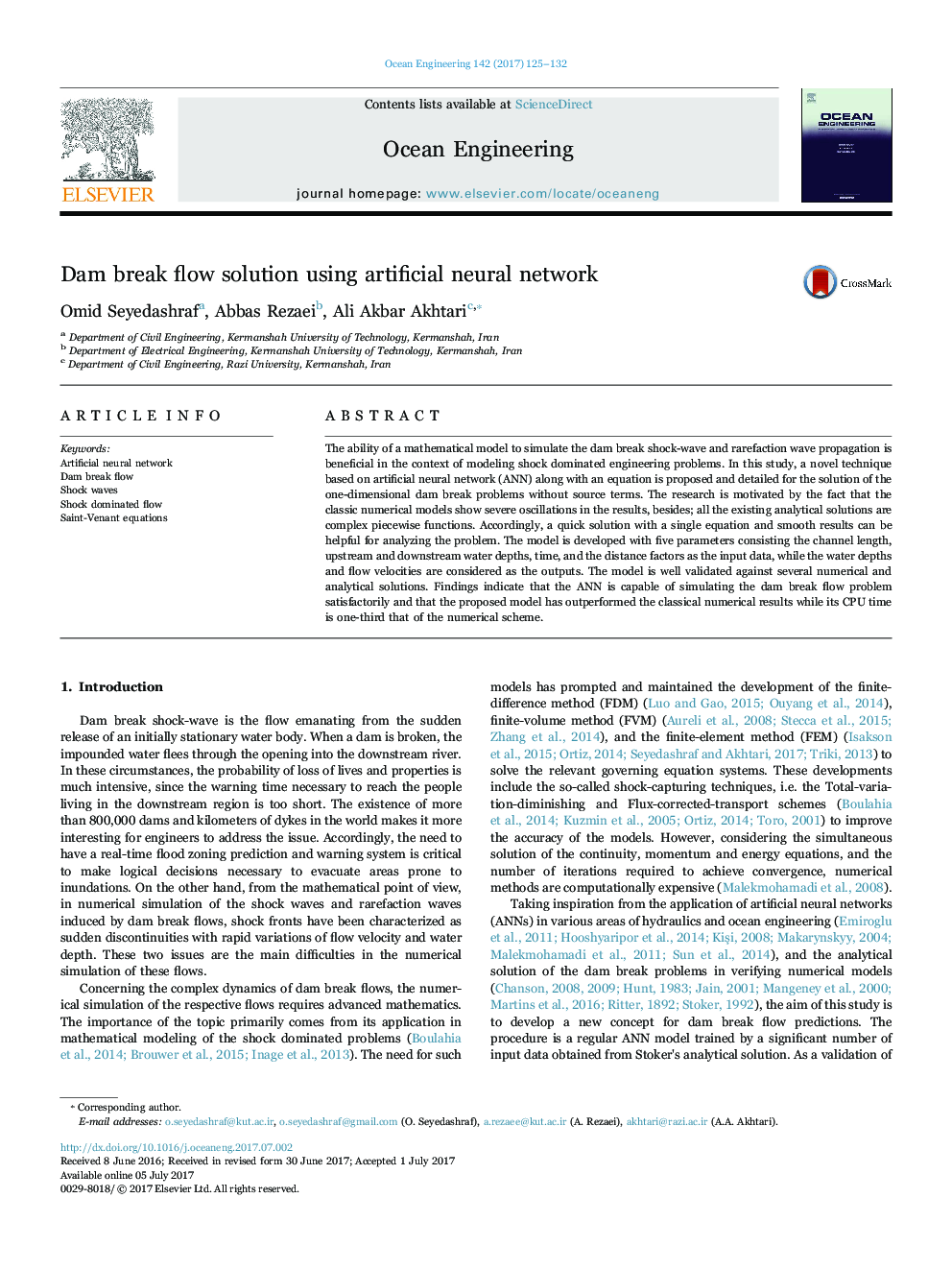| کد مقاله | کد نشریه | سال انتشار | مقاله انگلیسی | نسخه تمام متن |
|---|---|---|---|---|
| 5474357 | 1520648 | 2017 | 8 صفحه PDF | دانلود رایگان |
- A novel dam break solution is proposed based on artificial neural network (ANN).
- This study proposes a single monolithic equation for the dam break flow solution.
- The proposed model does not produce spurious fluctuations near abrupt changes in the results.
- Using the proposed model there is no need to consider the CFL criterion.
The ability of a mathematical model to simulate the dam break shock-wave and rarefaction wave propagation is beneficial in the context of modeling shock dominated engineering problems. In this study, a novel technique based on artificial neural network (ANN) along with an equation is proposed and detailed for the solution of the one-dimensional dam break problems without source terms. The research is motivated by the fact that the classic numerical models show severe oscillations in the results, besides; all the existing analytical solutions are complex piecewise functions. Accordingly, a quick solution with a single equation and smooth results can be helpful for analyzing the problem. The model is developed with five parameters consisting the channel length, upstream and downstream water depths, time, and the distance factors as the input data, while the water depths and flow velocities are considered as the outputs. The model is well validated against several numerical and analytical solutions. Findings indicate that the ANN is capable of simulating the dam break flow problem satisfactorily and that the proposed model has outperformed the classical numerical results while its CPU time is one-third that of the numerical scheme.
Journal: Ocean Engineering - Volume 142, 15 September 2017, Pages 125-132
